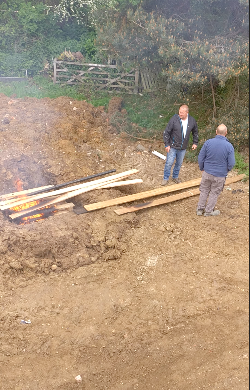Competition probe into 8 house builders over pricing of new homes
This post has already been read 813 times!
The Competition Markets Authority has published its final naming report on report on the housebuilding market in the UK finding that the pricing of new homes, complex and unpredictable planning system, together with the limitations of speculative private development, is responsible for the persistent under delivery of new homes which is leading to poor build quality.
The study also found substantial concerns about estate management charges which have burdened the homeowners often facing high and unclear charges for the management of facilities such as roads, drainage, and green spaces which should be covered by council tax charges. Concerns have been found, too, with the quality of some new housing after the number of owners reporting snagging issues increased over the last 10 years.
Sarah Cardell, Chief Executive of the CMA, said:
Housebuilding in Great Britain needs significant intervention so that enough good quality homes are delivered in the places that people need them.
Our report – which follows a year-long study – is recommending a streamlining of the planning system and increased consumer protections. If implemented, we would expect to see many more homes built each year, helping make homes more affordable. We would also expect to see fewer people paying estate management charges on new estates and the quality of new homes to increase. But even then, further action may be required to deliver the number of homes Great Britain needs in the places it needs them.
The CMA has also today opened a new investigation into the suspected sharing of commercially sensitive information by housebuilders which could be influencing the build-out of sites and the prices of new homes. While this issue is not one of the main drivers of the problems we’ve highlighted in our report, it is important we tackle anti-competitive behaviour if we find it.
Housebuilding in Great Britain
There are persistent shortfalls in the number of homes built across England, Scotland, and Wales, with less than 250,000 built last year across Great Britain – well below the 300,000-target for England alone.
The report identified a wide range of different types of housebuilders operating in the market: around two-fifths of the homes built between 2021 to 2022 were delivered by the largest, national housebuilders while more than 50,000 homes were delivered by thousands of smaller, regional builders.
Around 60% of all houses built in 2021 to 2022 were delivered by speculative private development, which is when builders obtain land, secure planning permission, and construct homes without knowing in advance who will buy them or for how much. This way of building homes has given builders flexibility to respond to changes in the market. However, the country’s reliance on this model has seen the gap widen considerably between what the market will deliver and what communities need.
CMA Findings
The report found that this speculative approach to building, coupled with complex and unpredictable planning rules across the three nations, has been responsible for the persistent under delivery of homes:
- Planning Rules: the planning systems in England, Scotland and Wales are producing unpredictable results and often take a protracted amount of time for builders to navigate before construction can start. The report highlights that many planning departments are under resourced, some do not have up to date local plans, and don’t have clear targets or strong incentives to deliver the numbers of homes needed in their area. They are also required to consult with a wide range of statutory stakeholders – these groups often holding up projects by submitting holding responses or late feedback to consultations on proposed developments.
- Speculative Private Development: the report found another significant reason behind under delivery of homes are the limitations of private speculative development. The evidence shows that private developers produce houses at a rate at which they can be sold without needing to reduce their prices, rather than diversifying the types and numbers of homes they build to meet the needs of different communities (for example providing more affordable housing).
- Land Banks: the CMA assessed over a million plots of land held by housebuilders and found the practice of banking land was more a symptom of the issues identified with the complex planning system and speculative private development, rather than it being a primary reason for the shortage of new homes.
- Private Estate Management: the CMA found a growing trend by developers to build estates with privately managed public amenities – with 80% of new homes sold by the eleven biggest builders in 2021 to 2022 subject to estate management charges. These charges are often high and unclear to homeowners. Whilst the average charge was £350 – one-off, unplanned charges for significant repair work can cost thousands of pounds and cause considerable stress to homeowners. The report highlights concerns that many homeowners are unable to switch estate management providers, receive inadequate information upfront, have to deal with shoddy work or unsatisfactory maintenance, and face unclear administration or management charges which can often make up 50% or more of the total bill.
- Quality: housebuilders don’t have strong incentives to compete on quality and consumers have unclear routes of redress. Analysis also suggests that a growing number of homeowners are reporting a higher number of snagging issues (at least 16). The CMA’s consumer research and other evidence revealed that a substantial minority also experienced particularly serious problems with their new homes, such as collapsing staircases and ceilings.


